Report
- Published: Thursday, June 13 2013 06:37
AWB AstroArts Project chair, Daniela De Paulis in a conversation with Jancy McPhee, Director of the Humans in Space Youth Art Competition, an international project to inspire youth to think about and creatively communicate what they believe is the future of human spaceflight and why it is important.
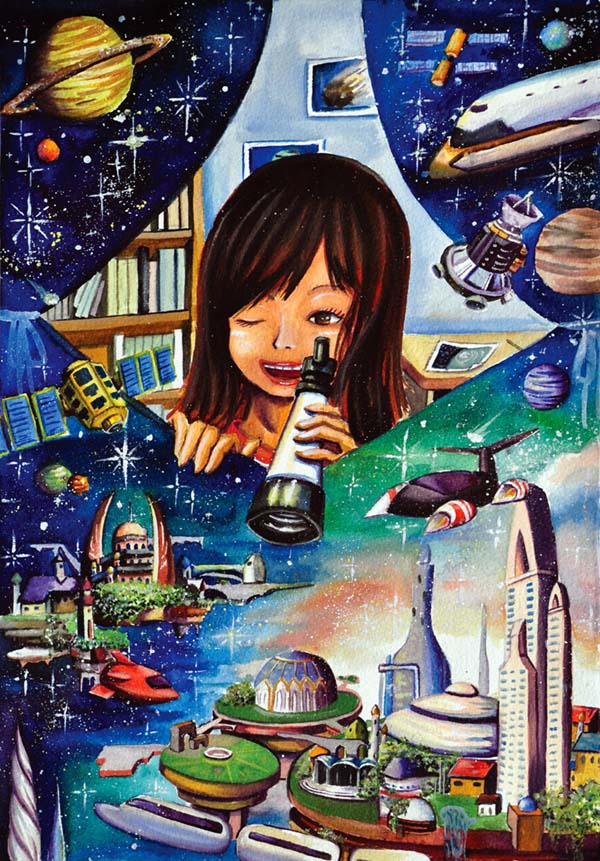
How did the idea for the competition start?
The competition idea began from a convergence of several things back in 2009. First, I had just taken “innovation” training; so, I was actively trying to keep my mind open to my own seemingly “crazy” ideas. Second, morale in the US space program was a bit low, since space funding was tight, and the Shuttle was retiring; thus, I was thinking that we needed some new ideas and some re-inspiring. Third, although I am trained as a research scientist, between us, my family members and I have dabbled in writing, drawing, music, and theater; so I had some layman’s appreciation for the power of artistic conceptualization and communication. Lastly, and the reason for the timing of the idea, I was on the planning committee for the 18th International Academy of Astronautics’ (IAA) Humans in Space Symposium, occurring in April 2011 in Houston, Texas, my home town.
The Symposium theme that year was “Planning for the Next Golden Age of Human Space Flight”. Although most people probably find it obvious that the future of space belongs to the children of today, I was not really struck with the implications of that fact until I was participating in one of the Symposium organizing committee meetings. That day, I reasoned that we ought to ensure that children are involved in the planning of the future of space, so that we can consider the next generation’s visions and priorities as we plan. Ideally, potentially any type of child should be involved, not just the ones who are already interested in space and studying science and technology. Each child, and even members of the adult public, could have valuable ideas to contribute. Similarly, anyone of any age could benefit from information about the impact of space exploration on Earth and humanity, as they are the world’s current and future workers, decision-makers and citizens.
The resulting Humans in Space Youth Art Competition project has 2 Phases . Through a Phase 1 world-wide online Competition, we challenge young people to learn about and “be inspired” by space and “be creative” in how they think about and communicate their ideas about the future, using visual, literary, video and musical artwork. During Phase 2, we promise that their ideas will “be heard” through displays and performances of the youth artwork around the globe, offering visibility for youth messages and creativity. In this way, the youth artwork also has the chance to inspire people of all ages and to get people thinking and talking about space.
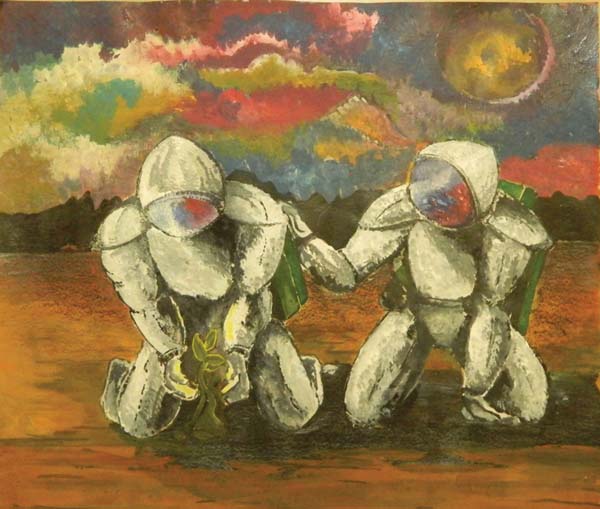
Is this the first art competition launched by NASA so far?
The first online art competition was in 2010, and we are still getting requests for exhibits of that set of artwork. The recent 2012 online competition just closed, and we are about to begin the 2013-2014 touring season this summer. The first exhibit events will be flying some of the artwork on the International Space Station in May, bouncing some of the artwork off the moon in June, and performing a large amount of the artwork in a live multi-media show at the 19th Humans in Space Symposium Opening Ceremony in July.
Who are the collaborators in the competition?
For both competitions, NASA and the Universities Space Research Association (USRA) have been the collaborators. For the 2012 Competition, the Institute of Aerospace Medicine of the German Aerospace Center (DLR) joined us to help encourage young people to participate and have their artwork performed during the Opening Ceremony of the 19th Humans in Space Symposium in Cologne, Germany. For both Competitions, we have had many smaller partners who assisted in marketing, judging, displaying and performing the artwork, etc. It really “takes a village” to carry out a complicated, multi-phased, multi-national, multi-disciplinary project like this one.
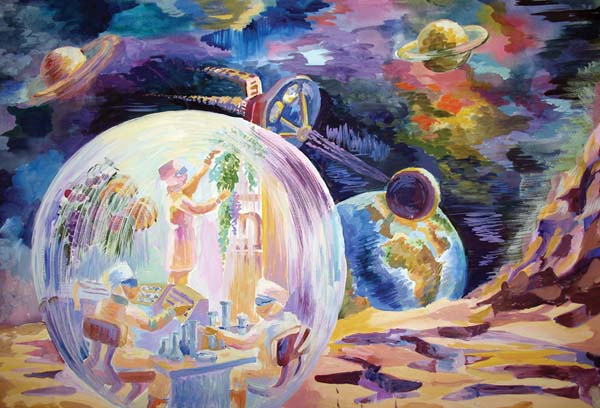
What do you think makes this competition different from others?
I think that this project is unique in the intentionally large numbers of different types of people that we involve—young people and adults, scientists and artists, local and international representatives, educators and entrepreneurs, managers and astronauts, performers and viewers, etc.
Also, we promise to listen to what the young people have to say and to help their ideas be visible to others, showing that we really value the effort and content of what young people have created. What’s more is that we really encourage appropriate organizations in any community to host an exhibit or performance of the youth artwork to inspire dialogue about space in their area. Because of the electronic format of the artwork, we can help hosts to create a display in virtually any location or venue, tailored to their available equipment, personnel, budget and target audience.
How do you see it evolving in future editions?
In order to encourage and allow the Competition to grow over the next years, we will need to work more and more with a network of points of contact throughout the world who can help to spread the word about the competition and overcome language and cultural barriers. We also will need to continually evolve how we manage and evaluate larger and larger pools of artwork.
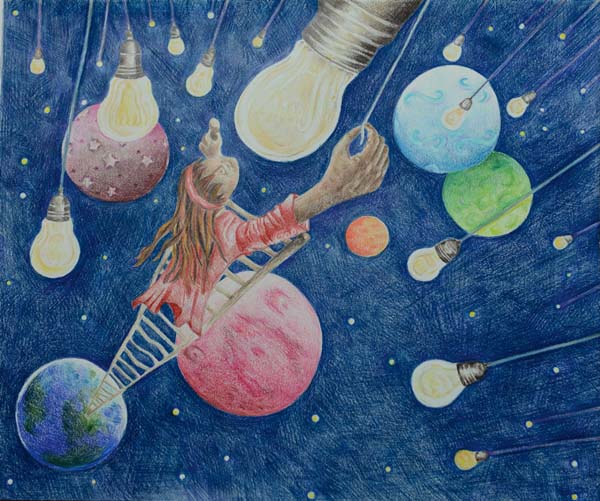
Can art really help students in becoming more interested in Science?
I believe that art (defined here as any creative expression media—literary, musical, visual, video, etc.) can be a very motivating format for learning and for conceptualizing and communicating ideas. People are engaged by different types of things, and allowing a person to participate either in the creation or the viewing of ideas in different formats seems a very powerful way to get people thinking and talking.
If we want to move beyond our current level of scientific and technological understanding and tools, knowing facts alone is not enough. We also need to be able to use that information creatively; in other words, we need to train the imagination. Einstein himself said, “Imagination is more important than knowledge.” I believe that both knowledge and imagination are important for the advancement of science and technology, including space exploration. For instance, scientists and engineers need to be able to think in novel ways to solve new challenges. Similarly, we have many examples where an artistically-imagined concept in a painting or book has contributed to a later scientific discovery or technological development.
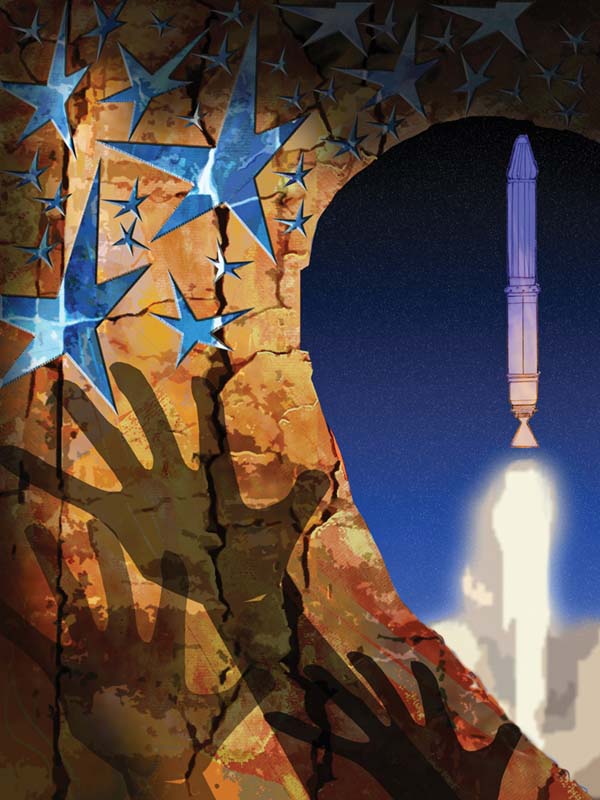
How did you get interested in working in Space?
I was trained as a scientific researcher. My personal expertise is in cellular and molecular neuroscience; so I am a life scientist. My husband has worked in astronomy and space for as long as I have known him, and his job first brought us to the Houston area. It was a natural fit for me to use my life sciences training to help support the crewed space flight program physically located here. Then, as discussed above, I “fell into” a career in education and outreach through the Humans in Space Youth Art Competition. My colleagues and I hope to continue to develop the Youth Art Competition, while also developing more projects that help inspire people to think about and participate in the future of human space flight and exploration.
Image credit: Humans in Space Youth Art
###








Comments